Table of Contents
Context: The British mini-series Adolescence has reignited global discussions on the rising incidence of juvenile violent crimes, especially among boys. The show sheds light on complex factors like cyberbullying, online misogyny, and adolescent psychology—issues increasingly relevant across countries, including India.
The rising participation of juveniles in violent offences is a critical concern that necessitates immediate scholarly, legal, and policy intervention. The increasing occurrences of murder, rape, and grevious bodily harm perpetrated by minors, both internationally and in India, not only confronts prevailing concepts of childhood and innocence but also scrutinises the sufficiency and pertinence of existing legal frameworks aimed at addressing juvenile delinquency. This article examines recent facts and trends, their consequences for India’s legal system, and the influence of the Juvenile Justice (Care and Protection of Children) Act in addressing these developments.
Violent Juvenile Crimes in India and Globally
- Recent worldwide media, including the British miniseries Adolescence, have substantially influenced public discourse on juvenile crime.
- The show depicts the unsettling narrative of a 13-year-old child involved in the death of his classmate, emphasizing profound societal concerns such as cyberbullying, online misogyny, and the incel subculture.
- It emphasises the pressing necessity to investigate the psychosocial factors that drive adolescents to perpetrate acts of severe violence.
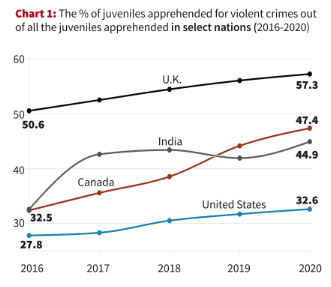
- Empirical data substantiates these concerns. In the United Kingdom, the percentage of minors arrested for violent crimes rose from 50% to 57% between 2016 and 2020.
- A comparable trend is evident in India. Despite a decline in the total number of adolescents in contact with the law from 37,402 in 2017 to 33,261 in 2022, the proportion caught for violent crimes increased from 32.5% in 2016 to 49.5% in 2022.
- This indicates a qualitative transformation in the character of adolescent offences, from minor infractions to more egregious and violent conduct.
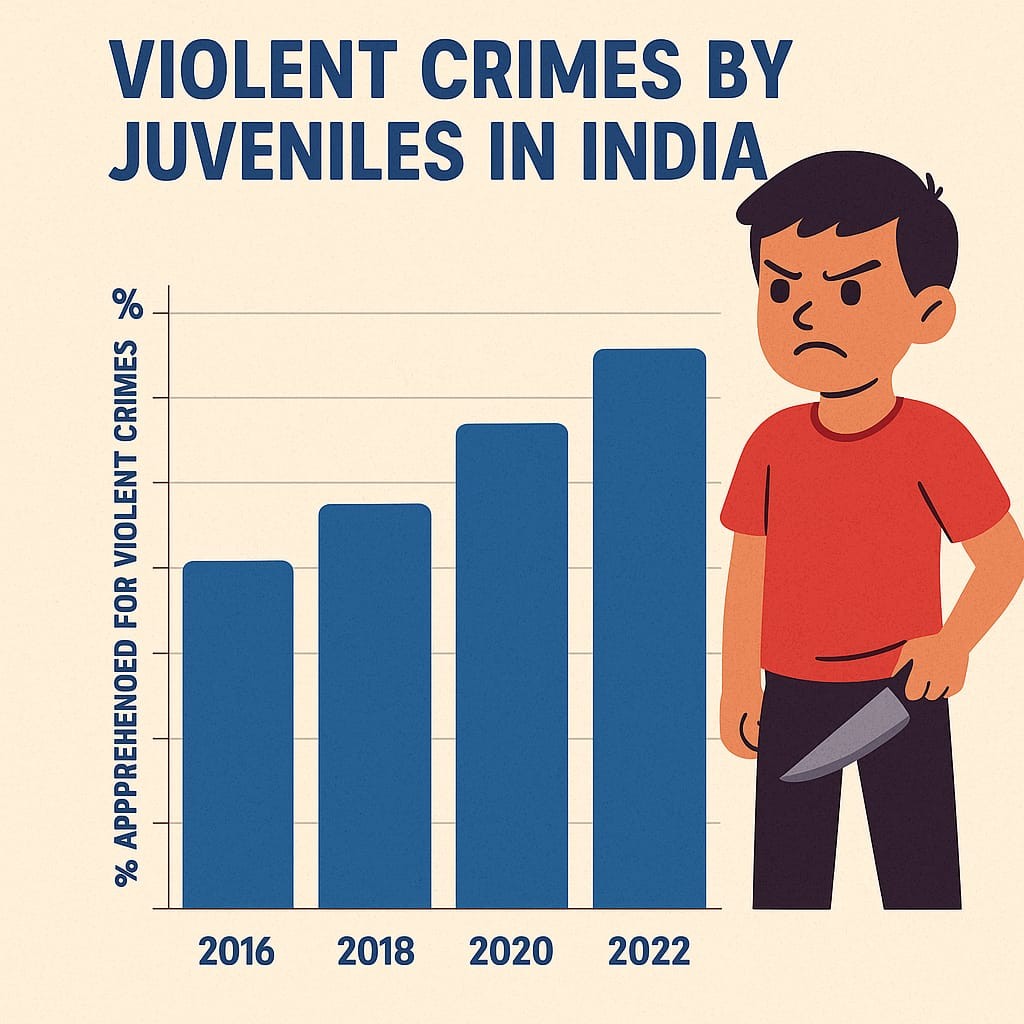
Geographical Disparities in Juvenile Crimes in India
- Research by state indicates considerable variations in juvenile violent crime rates throughout India.
- Madhya Pradesh accounts for 21.8% of all violent juvenile crimes documented from 2017 to 2022, followed by Maharashtra (18%), Rajasthan (9.6%), Chhattisgarh (8.4%), and Tamil Nadu (5.8%).
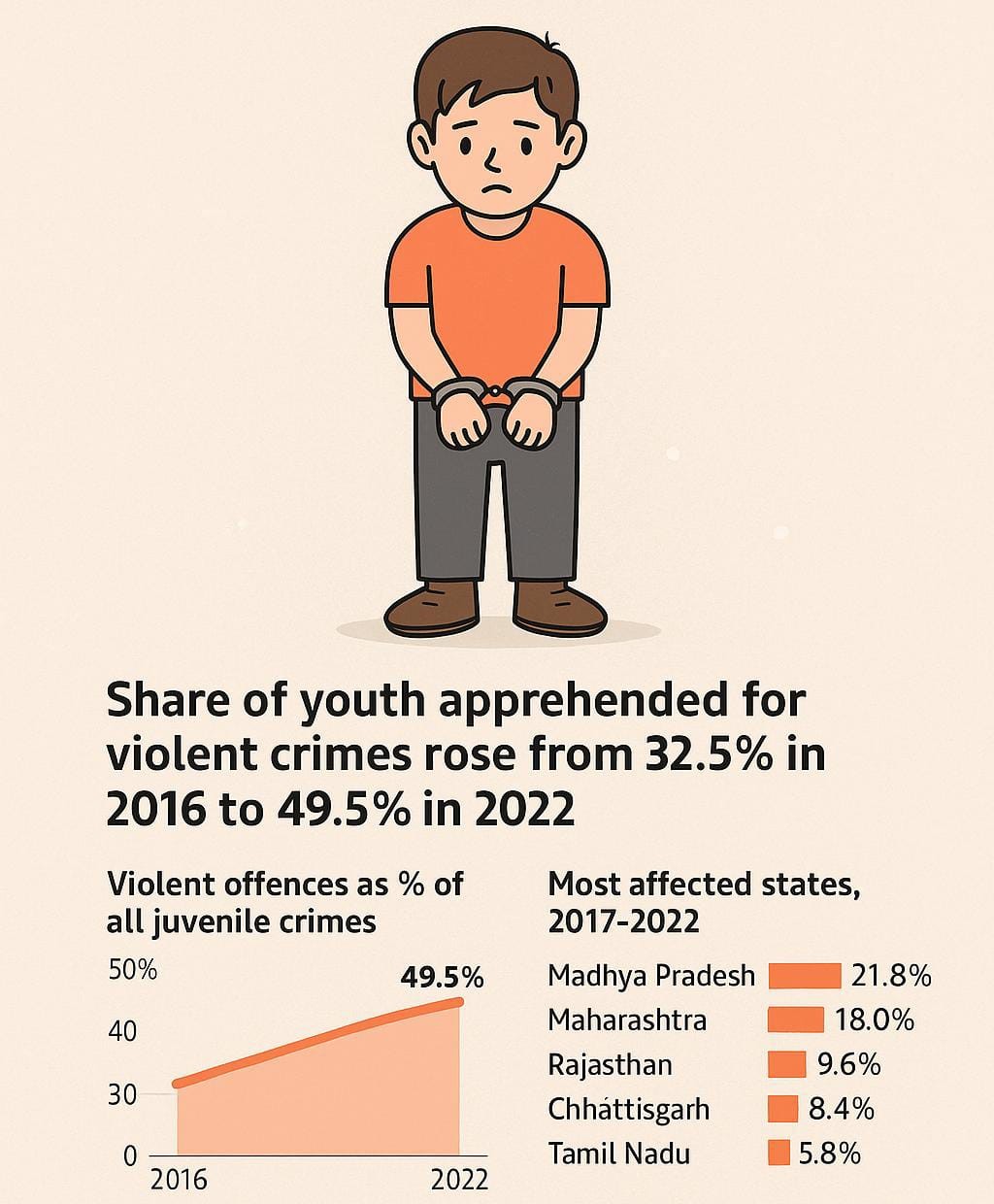
- Despite its reduced geographical area, Delhi accounted for 6.8% of such incidents, potentially due to enhanced law enforcement and improved crime reporting systems.
- Jharkhand exhibits the highest proportion of violent crimes among juvenile crimes in each state, at 67%, followed closely by Tripura, West Bengal, Chhattisgarh, and Madhya Pradesh, all over 60%.
- Odisha stands out as an outlier, with under 10% of its adolescent offences categorised as violent, indicating the impact of regional and societal influences on crime rates.
Status of Juvenile Crimes in India
- Rising Share of Violent Offences: While the total number of juveniles in conflict with the law declined from 37,402 in 2017 to 33,261 in 2022, the proportion of violent crimes increased.
- In 2016, 32.5% of juveniles were apprehended for violent offences.
- By 2022, this rose sharply to 5% — nearly half of all juvenile apprehensions.
- Nature of Violent Crimes: A police study found that between January 2022 and May 2024, 259 minors were involved in incidents of murder, attempted murder, rape, robbery, and extortion
- State-wise Trends: Madhya Pradesh (20%) and Maharashtra (18%) lead in the total number of juvenile violent crimes (2017–2022).
- Jharkhand had the highest share of violent crimes among all juvenile offences (67%).
- Delhi accounts for 6.8% despite its smaller size, likely due to better reporting.
- Regional Hotspots: Central and eastern Indian States like Madhya Pradesh, Chhattisgarh, and Tripura are major hotspots for violent juvenile crimes.
- Odisha, in contrast, reported only 10% of juvenile crimes as violent.
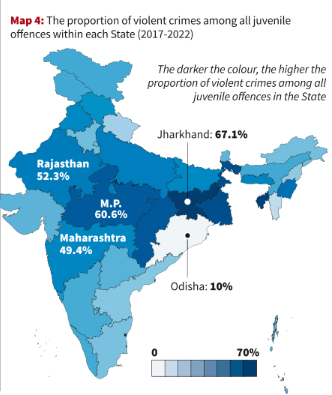
Nature of Violent Crimes Committed by Juveniles
- The spectrum of violent offenses encompasses rape, murder, physical assault, attempted murder, robbery, arson, and dacoity.
- Petty offences such as rash driving, theft, and trespassing are omitted from this classification.
- The transformation in criminal behaviour indicates profound behavioural changes among adolescents, maybe driven by peer influence, exposure to violent online content, dysfunctional familial settings, and the absence of constructive engagement opportunities.
- Recent occurrences underscore this troubling trend. A 13-year-old kid in Karnataka stabbed his classmate due to a small disagreement, while in Chennai, seven children were apprehended in connection with a gang rape case involving a 13-year-old girl.
- These occurrences emphasise the necessity for structural reform, transcending mere punitive measures.
Juvenile Justice (Care and Protection of Children) Act, 2015: An Overview
The Juvenile Justice (Care and Protection of Children) Act, 2015, replaced the Juvenile Justice Act of 2000 and instituted substantial modifications in the management of juveniles in conflict with the law. The principal aims of the Act are:
- To ensure the care, protection, and rehabilitation of children who conflict with the law or need of care and protection.
- To implement a child-centric approach in the adjudication and resolution of cases about minors.
- To facilitate the formation of Juvenile Justice Boards (JJBs) and Child Welfare Committees (CWCs).
- To allow individuals aged 16 to 18 years to be tried as adults for heinous offences under specific circumstances.
Principal Attributes
- The Act provides a preliminary evaluation by the JJB to determine if a juvenile aged 16 to 18 should be tried as an adult for heinous offences.
- The legislation prioritises reformative strategies, encompassing education, vocational training, counselling, and societal reintegration.
- The Act requires Child Care Institutions, Special Homes, and Observation Homes to provide rehabilitation and care.
The Act’s Role in Shaping India’s Criminal Justice Approach
- The JJ Act signifies a shift from a solely welfare-oriented strategy to a more sophisticated model that reconciles child rights with public safety.
- It acknowledges the necessity for differential treatment based upon the offender’s maturity, the severity of the offence, and societal needs.
- The inclusion of the provision permitting minors to be tried as adults for heinous offenses was a reaction to escalating public outrage following the 2012 Delhi gang rape incident, in which one of the perpetrators was a minor.
- This provision continues to be controversial. Critics contend that it contravenes the notion of parens patriae, the state serving as a guardian, and subjects teenagers to the adult criminal justice system, which may be detrimental.
International Context and India’s Commitments towards Juvenile Crimes
- India’s juvenile justice system is consistent with international treaties, notably the United Nations Convention on the Rights of the Child (UNCRC), to which India is a signatory.
- The UNCRC underscores the necessity for specialised care and protection of children and promotes rehabilitation rather than retribution.
- The UN Standard Minimum Rules for the Administration of Juvenile Justice (Beijing Rules) and the Havana Guidelines also influence India’s legislative framework.
- These instruments emphasise the significance of:
- Proportionality in sentence.
- Refraining from institutionalisation unless as a final option,
- The child’s right to legal representation,
- The function of social inquiry reports in legal adjudication.
- The Juvenile Justice Act of India has sought to incorporate international standards while addressing the distinct socio-legal difficulties faced by the nation.
Key Reasons Behind the Rise in Juvenile Crimes in India
- Family Breakdown & Parental Issues: Broken homes or absence of parents create emotional voids and a lack of supervision.
- Parental imprisonment leads to psychological trauma, making children vulnerable to delinquency.
- Poverty & Economic Pressure: Financial hardship drives minors toward crime for quick money or a more glamorous lifestyle.
- The lure of easy earnings and reckless thrill-seeking encourages theft and robbery.
- Peer Influence & Gang Culture: Adolescents join gangs or delinquent peer groups for acceptance, status, or protection.
- Social media platforms encourage committing and flaunting crimes (e.g., bike thefts for Instagram fame).
- Mental Health & Psychological Stress: Stress, trauma, or underlying psychological issues (like impulsivity or emotional instability) increase crime risk.
- Easy Access to Weapons: In Delhi, the availability of “dragon knives” has led to violent assaults and even homicide by minors.
- Urbanization & Lack of Supervision: In metropolitan areas, children may lack adult guidance or be drawn into street-based criminal networks.
- Media & Cultural Influences: Exposure to violent content in films, games, or social media can desensitise minors and normalise aggression.
- Substance Abuse: Usage of alcohol or drugs can impair judgment and heighten the risk of illegal behaviour.
Policy Recommendations and the Way Forward
- Strengthen Preventive Mechanisms: School-based interventions, community awareness initiatives, and mental health support networks must be fortified to prevent youth engagement in criminal activities.
- Improve Data Systems: Precise and disaggregated data are crucial for evidence-based policy formulation.
- Reform Institutional Care: Juvenile facilities must prioritise genuine rehabilitation via education and treatment instead of serving as punitive environments.
- Equitable Legal Reform: Although the possibility of prosecuting juveniles as adults persists, a comprehensive examination of the child’s socio-psychological background should be mandated.
- Emphasize Digital Literacy and Online Conduct: Given the impact of cyberbullying and online incel culture on teenage behavior, it is imperative to incorporate lessons on digital ethics into school curricula.
- The rise in violent Juvenile crime in India reflects underlying structural, psychological, and cultural concerns.
- Although the Juvenile Justice Act has developed to incorporate both reformative and deterrent strategies, further action is required to tackle the underlying causes of juvenile crime.
- A multidisciplinary, child-centred strategy grounded in rights, rehabilitation, and reintegration is crucial for establishing a fair and humane criminal justice system for adolescents.
- Implement early interventions by identifying at-risk children and providing counselling.
- Strengthen family support systems, focusing on parenting skills and mental health support.
- Increase police vigilance, especially in detaining minors with dangerous weapons.
- Promote rehabilitation over punishment, as emphasized under the JJ Act, through expanded observation homes and trauma-informed care

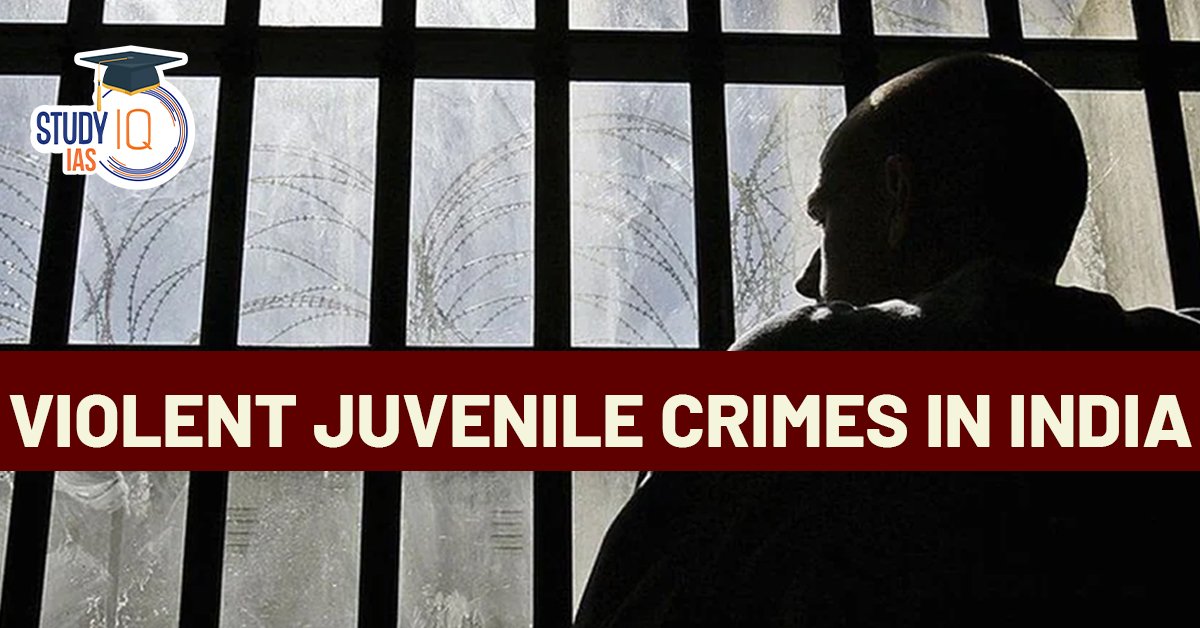
 Reserved vs General Quota: Supreme Court...
Reserved vs General Quota: Supreme Court...
 Supreme Court’s Interim Order on the W...
Supreme Court’s Interim Order on the W...



















